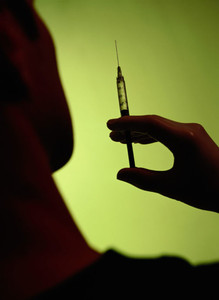In the third of a series of four articles on pharmaceutical expenditure, Vogler and co-authors explain the different methodological approaches to measuring pharmaceutical utilization and outline some of the volume-control policies in place across Europe [1].
Pharmaceutical utilization
One simple approach to assessing pharmaceutical utilization is through the number of medicine packs sold, dispensed or consumed by patients, These can be indicated by ‘standard units’, defined as the smallest doses of a product equivalent to one tablet, capsule, teaspoon, ampoule or vial.
Pharmaceutical-utilization research has contributed significantly to developing standardized measurements of pharmaceutical consumption. The ‘defined daily dose’, for example, refers to the average maintenance dose of the medicine when used on its major indication in adults and was developed specifically to allow international comparisons of volume data to be made.
‘Items prescribed’ are a focal point of analyses for public payers and allows comparisons to be made in prescribing patterns. The ‘prescribed daily dose’ is the average daily dose prescribed, as obtained from a representative sample of prescriptions.
Volume-control policies
In Europe, physician prescribing is usually regulated through volume-control policies. Some countries have pharmaceutical budgets in place for prescribers and these are sometimes combined with incentives and penalties. Sanctions may not always be easy to implement if legal proceedings ensue, as was the case in France, Germany and Italy in the 1990s.
Prescription monitoring
Physician prescribing patterns are routinely monitored in all European countries to assess volume and quality of prescribing.
The Danish electronic monitoring system ‘Ordiprax’ has been flagged as an effective system that allows authorities to assess pharmaceutical consumption at the level of the prescribing physicians and at aggregated local and central levels. Prescribing physicians can also access the system to compare their prescribing patterns to the average of other physicians in their region.
In some countries, visits from sickness-fund representatives have helped raise awareness among physicians of their prescribing activity and the need to adhere more closely to agreements.
Specific agreements
In some countries, specific agreements can be made with physicians. These include combining financial incentives for prescribing a specific target within a therapeutic class, as in France, or prescribing a minimum target of ‘non-expensive medicines’, whose exact amount depends on their medical specialization, as in Belgium.
Initiatives aimed at increasing generics uptake
The use of lower-priced medicines over expensive originator medicines is important in reducing pharmaceutical expenditure and different policies have been developed to encourage generics’ use among different stakeholders. These include:
- Prescribers: International Nonproprietary Name (INN) prescribing
- Pharmacists: generics substitution
- Patients: campaigns to raise awareness of the role and benefits of generics.
Across Europe, both obligatory and voluntary schemes are in place for INN prescribing. High generics uptake has been achieved in the UK, with voluntary INN prescribing, whereas, Lithuania and Slovakia have switched from voluntary to obligatory INN prescribing on the basis that previous voluntary policies had not been fully enforced, leading to unsuccessful outcomes.
Econometric model
An econometric model has been used in 12 European countries to assess the relevance of different volume components that influence pharmaceutical expenditure. Electronic prescribing systems, pharmaceutical budgets and the introduction of generics substitution have been identified as successful in decreasing pharmaceutical expenditure using this method.
Conflict of interest
The authors of this paper [1] declared that there were no conflicts of interest.
Editor’s comment
Dr Sabine Vogler, Member of International Editorial Advisory Board of GaBI Journal, published the full manuscript in GaBI Journal, 2013, Issue 4, readers are invited to view the paper:
Understanding the components of pharmaceutical expenditure—overview of pharmaceutical policies influencing expenditure across European countries
If you are interested in contributing a research paper in generics policies of your country to GaBI Journal, please send us your submission here.
Related articles
Understanding pharmaceutical expenditure
Price components of pharmaceutical expenditure
Pharmaceutical expenditure as a health-expenditure indicator
Reference
1. Vogler S, et al. Understanding the components of pharmaceutical expenditure—overview of pharmaceutical policies influencing expenditure across European countries. Generics and Biosimilars Initiative Journal (GaBI Journal). 2013;2(4). doi: 10.5639/gabij.2013.0204.051
Permission granted to reproduce for personal and non-commercial use only. All other reproduction, copy or reprinting of all or part of any ‘Content’ found on this website is strictly prohibited without the prior consent of the publisher. Contact the publisher to obtain permission before redistributing.
Copyright – Unless otherwise stated all contents of this website are © 2013 Pro Pharma Communications International. All Rights Reserved.








 0
0











Post your comment